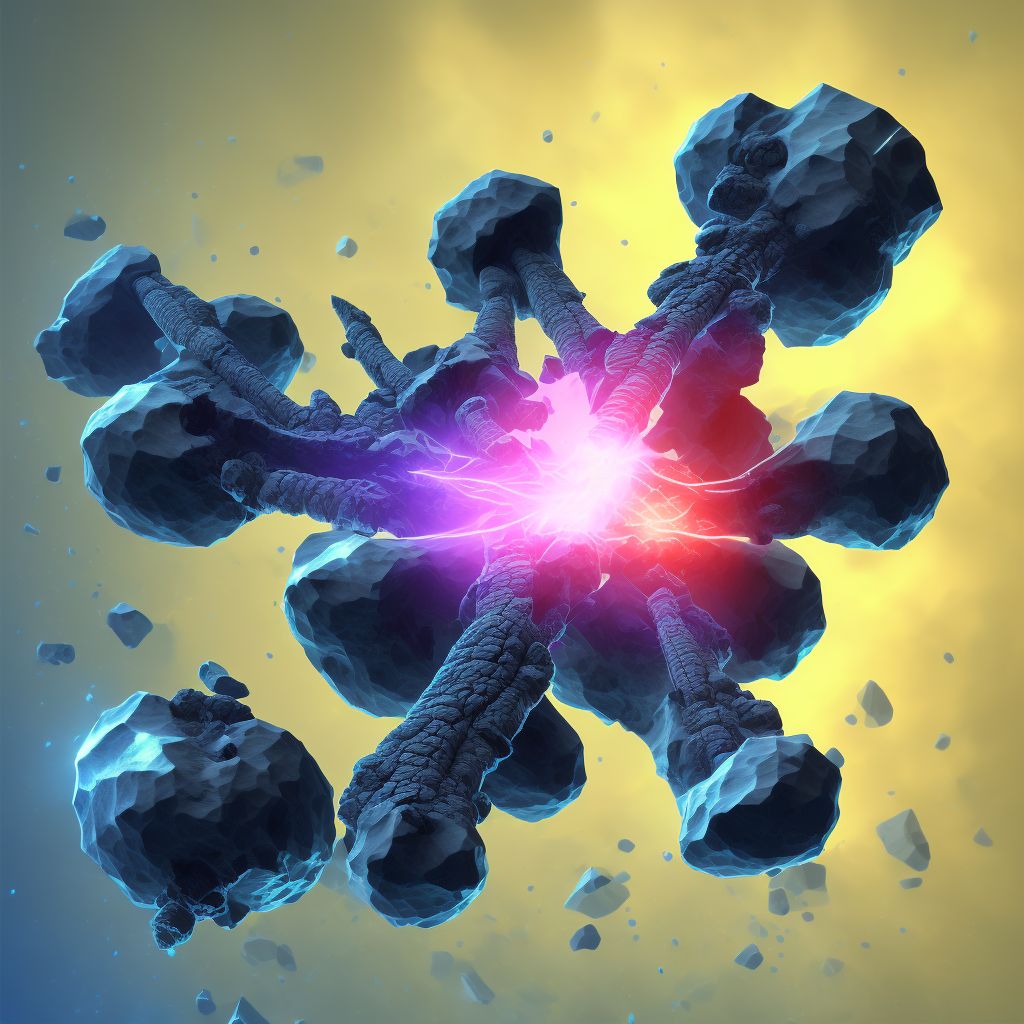
Displaced transverse fracture of shaft of unspecified tibia, subsequent encounter for open fracture type IIIA, IIIB, or IIIC with malunion Save
ICD-10 code: S82.223R
Disease category: S82.223: Displaced transverse fracture of shaft of unspecified tibia
Displaced Transverse Fracture of Shaft of Unspecified Tibia
A displaced transverse fracture of the shaft of the tibia refers to a specific type of bone fracture that occurs in the long bone located in the lower leg. This fracture involves a clean break across the tibia, resulting in the misalignment of bone fragments. However, in this article, we will focus on the subsequent encounter for open fracture types IIIA, IIIB, or IIIC with malunion.
Open fractures occur when the broken bone penetrates through the skin, leading to an increased risk of infection. Open fracture types IIIA, IIIB, or IIIC are classified based on the severity of the soft tissue damage, with IIIA being the least severe and IIIC being the most severe. Malunion, on the other hand, refers to the improper alignment or healing of the fractured bone, resulting in a deformity.
- Open Fracture Type IIIA: This type of open fracture involves a wound smaller than 1 cm with minimal soft tissue damage. The risk of infection is relatively low, and the fracture can be treated with appropriate medical care.
- Open Fracture Type IIIB: With a wound larger than 1 cm and extensive soft tissue damage, this type of open fracture carries a higher risk of infection. Adequate medical intervention is required to manage the fracture and prevent complications.
- Open Fracture Type IIIC: This is the most severe type of open fracture, involving extensive soft tissue damage, including injury to blood vessels and nerves. Immediate medical attention is crucial to prevent further complications and ensure proper healing.
It is important to note that displaced transverse fractures of the tibia, especially those subsequent to open fractures with malunion, require expert medical evaluation and treatment. This article does not provide information on treatment options, but it is essential to consult with a healthcare professional to determine the most appropriate course of action based on the individual's specific condition.
In conclusion, a displaced transverse fracture of the shaft of the tibia, subsequent encounter for open fracture types IIIA, IIIB, or IIIC with malunion, necessitates proper medical attention to ensure optimal healing and prevent complications. If you or someone you know has experienced such an injury, it is crucial to seek medical advice from a qualified healthcare provider.
Treatment of Displaced transverse fracture of shaft of unspecified tibia, subsequent encounter for open fracture type IIIA, IIIB, or IIIC with malunion:
Treatment Options for Displaced Transverse Fracture of Shaft of Unspecified Tibia
A displaced transverse fracture of the shaft of an unspecified tibia, subsequent encounter for open fracture type IIIA, IIIB, or IIIC with malunion can be a challenging injury to treat. However, with the right approach, patients can regain functionality and return to their normal activities. Here are ...
To see full information about treatment please Sign up or Log in